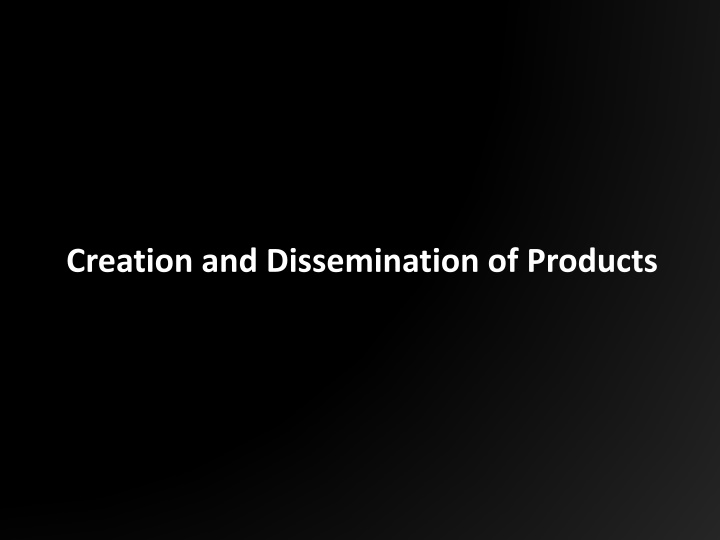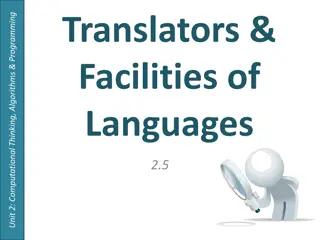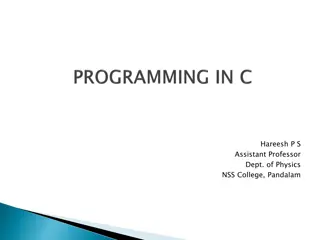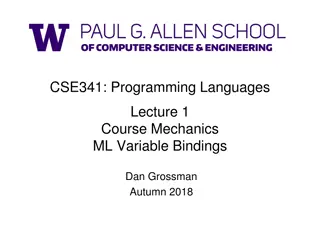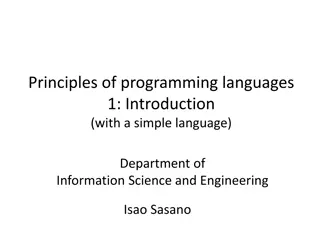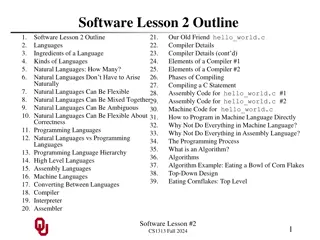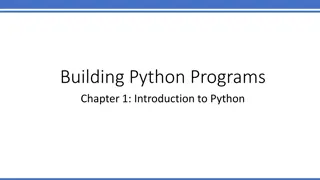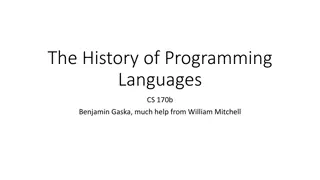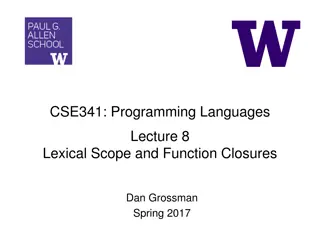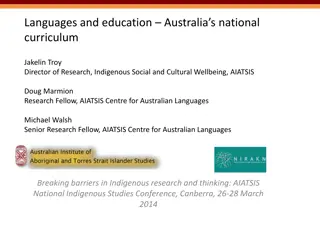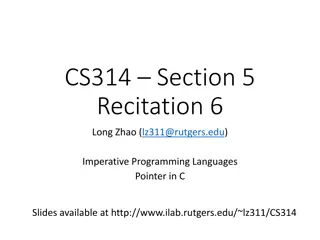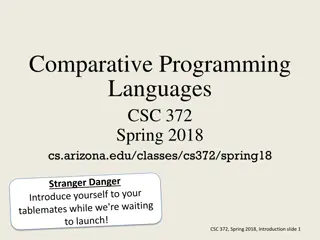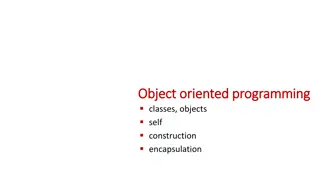Basics of C Programming: Standards, Languages, and Structure
This content covers the basics of C programming, including low-level features, C standards (ANSI C, C99, C11), high-level languages, and the structure of a C program. It explains the differences between high-level and assembly languages, emphasizes the importance of coding conventions, and outlines the build process using GCC to convert source code into executables.
Download Presentation

Please find below an Image/Link to download the presentation.
The content on the website is provided AS IS for your information and personal use only. It may not be sold, licensed, or shared on other websites without obtaining consent from the author.If you encounter any issues during the download, it is possible that the publisher has removed the file from their server.
You are allowed to download the files provided on this website for personal or commercial use, subject to the condition that they are used lawfully. All files are the property of their respective owners.
The content on the website is provided AS IS for your information and personal use only. It may not be sold, licensed, or shared on other websites without obtaining consent from the author.
E N D
Presentation Transcript
Our Users: Satellite Validation Model Validation Researchers Students
Our Users: Satellite Validation Model Validation Researchers Students The climate change Skeptic Models are lies Weather Changes. So what?
To Serve our Satellite and Model Validation User, the Researcher and the Student Need: Best Available data time series on a regular grid. Click and play.
To Serve Our Climate Skeptic User (and student) Need: Best Available data time series on a regular grid. And need fully QC d and documented original redundant data. Click and play. Need: The story explaining climate system and why each site is different.
The story: Our world is changing. (you can see it in the measurements)
The story: Theocean absorbs anthropogenic CO2. But when it does, it becomes more acidic.
The story: Theocean is warmed by the Sun. But the ocean can also hold and transfer heat to the atmosphere and affect climate.
The story: Currents in theocean redistribute the heat, CO2, and other properties, affecting where, when and by how much the oceans influences climate.
The OceanSITES website is where we meet our Users.
The OceanSITES website provides: DATA= DEPLOYMENT DATA DATA_GRIDDED = FULL TIMESERIES FLUXES = AIR-SEA TRANSFERS TRANSPORT = TRANSPORT The Story (heat, freshwater, and carbon cycles)
Our Sponsors: Government vs the Individual The unswayed scientist
